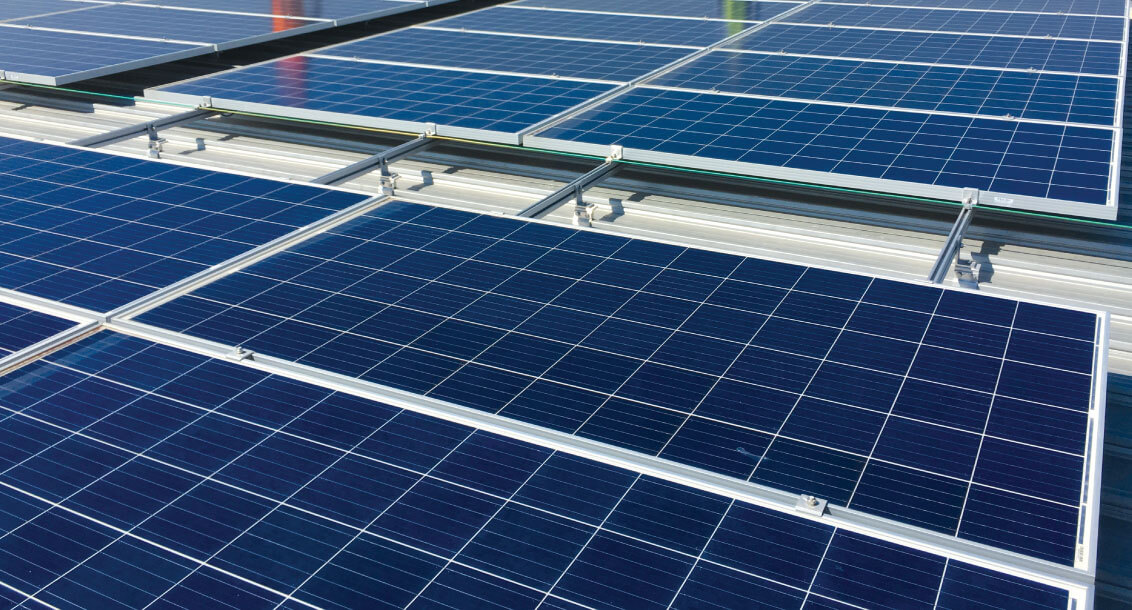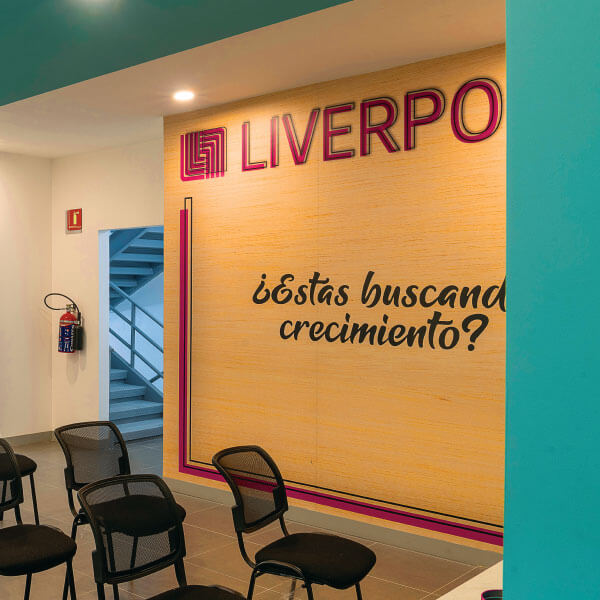Risk management
Comprehensive
(GRI 2-12, 2-13, 2-16) (TCFD GDR-C)
El Puerto de Liverpool analyzes and mitigates climate and business risks according to the recommendations of both internal and external experts. We set metrics and targets for prevention and mitigation, with specific actions taken across various initiatives.
We foster a culture of prevention through employee training on environmental metrics, health, and safety. We organize civil protection drills and apply the NOM-035-STPS-2018 standard for managing psychosocial risks. Communication of occupational risks is centralized, with responses coordinated between local and corporate teams. We conduct internal audits of critical points aligned with environmental management standards based on ISO 14001.
Physical risks are addressed through internal protocols, emphasizing the shared responsibility and commitment of all employees to risk management.
| Main Risks – El Puerto de Liverpool |
|---|
| Market |
| Consumer spending |
| Retail industry competition |
| Consumer preferences |
| Sales channel strategies |
| Real-estate industry dynamics |
| Regulatory |
| Marketing and product information regulations |
| Information privacy laws |
| Environmental, labor and health & safety laws |
| Operating |
| Supply chain issues |
| ESG practices in the supply chain |
| Talent recruitment and retention |
| Systems impact and/or disruptions |
| Financial |
| Availability of capital |
| Customer payment capacity |
| Changes in product prices |
| Changes in operating input prices |
| Exchange-rate fluctuations |
| Physical |
| Location reconstruction or repair |
| Collateral losses |
| Merchandise supply failures |

El Puerto de Liverpool is one of the first Mexican retail companies to publish a report aligned with TCFD recommendations.
Climate risks and opportunities
(TCFD EST-A, EST-B, EST-C, GDR-A, GDR-B)
In keeping with our commitment to limiting climate change and aware of the importance of clear and open communication on how this phenomenon may affect our company, El Puerto de Liverpool works to align reporting and internal practices with the recommendations of the Taskforce on Climate-related Financial Disclosures (TCFD). Our report was created on the basis of prior efforts, including exercises in greenhouse gas (GHG) emission accounting and responses to CDP questionnaires.
This report is intended as a complement to our Group’s annual reporting efforts. Its central aim is to indicate (i) the areas reported information aligned with TCFD recommendations and (ii) which additional information must be included to reinforce disclosures following TCFD guidelines.
In reporting this information, El Puerto de Liverpool (EPL) became one of the first Mexican retail companies to publish a report aligned with TCFD recommendations.
Selection and prioritization of main risks and opportunities
To identify the main physical and transition risks and opportunities to which our company may be exposed, we reviewed the most pressing issues facing the retail industry, particularly in the Mexican context.
As a first step, we identified 21 risks and opportunities, which were discussed in workshops held in various sessions with 12 key EPL departments. Meeting participants received an overview of the potential impact of the risks identified in EPL’s business strategy, with 10 salient risks and opportunities highlighted for further qualitative evaluation.
Bearing in mind that physical climate risks are evident only in patterns that emerge gradually over time, we analyzed climate projections through the year 2050, and to gain a clearer view of the possible change in risks, we also selected the year 2030 as a medium-term horizon. To examine our transition risks and opportunities, since many countries have set ambitious climate targets for 2030 and some have set net-zero targets for 2050, we chose these two periods as the medium and long-term horizons, respectively.

Summary of impacts of selected climate risk and opportunities
To analyze our climate risks and opportunities, we used the following climate scenarios:
For physical risks:
- Representative Concentration Pathway (RCP) 8.5: RCP8.5 is aligned with a very significant increase in the global mean temperature by the end of the century (1.6 - 4.8°C) and is the highest-impact scenario.
- RCP 4.5: The RCP4.5 scenario assumes a moderate level of mitigation and is aligned with an increase of approximately 1.1 - 2.6°C in the global mean temperature by the end of the century.
For transition risks and opportunities:
- Business as Usual (BAU) Scenario: This scenario takes into account projections from the International Energy Agency (IEA) for the Stated Policy Scenario (STEPS) and from the Network of Central Banks and Supervisors for Greening the Financial System (NGFS) for the current policy scenario.
- Below 2°C: The scenario we used aligns with the IEA’s Stated Policy Scenario (APS) and the NGFS Below 2°C scenario.
The following are the results of our medium-term (2030) and long-term (2050) analyses:


| Implications | Risk rating | ||||||
|---|---|---|---|---|---|---|---|
| 2030 | 2050 | ||||||
 Physical risks Physical risks |
Implications |
Increase in the intensity and frequency of tropical cyclones By 2030:
By 2050:
|
Risk rating | 2030 | Uncertain | 2050 | Moderate |
| Implications |
Increase in the frequency, intensity, and duration of extreme precipitation events
|
Risk rating | 2030 | Low | 2050 | Moderate | |
| Implications |
Increase in the frequency and intensity of river flooding
|
Risk rating | 2030 | High | 2050 | Moderate | |
| Implications |
Rise in sea level and coastal flooding
|
Risk rating | 2030 | Low | 2050 | Low | |
| Implications |
Increase in the frequency, intensity, and duration of droughts
|
Risk rating | 2030 | Moderate | 2050 | High | |
| Implications | Risk rating | ||||||
|---|---|---|---|---|---|---|---|
| 2030 | 2050 | ||||||
 Transition risks and opportunities Transition risks and opportunities |
Implications |
General climate policies that could raises prices and production costs within the supply/value chain
| Risk rating | 2030 | Moderate | 2050 | High |
| Implications |
Policies to promote a circular economy
|
Risk rating | 2030 | Moderate | 2050 | High | |
| Implications |
Technological advances focused on a more efficient system for transporting and distributing merchandise, low in carbon and non-polluting
|
Risk rating | 2030 | Moderate | 2050 | High | |
| Implications |
Introduction and expansion of carbon price fixing mechanisms, like carbon taxes and cap-and-trade systems By 2030:
|
Risk rating | 2030 | Low | 2050 | Moderate | |
| Implications |
Use of technologies to improve energy efficiency and resource consumption in sustainable buildings
|
Risk rating | 2030 | High | 2050 | Moderate | |
Many countries have set ambitious climate targets for 2030 and some have set net-zero targets for 2050

